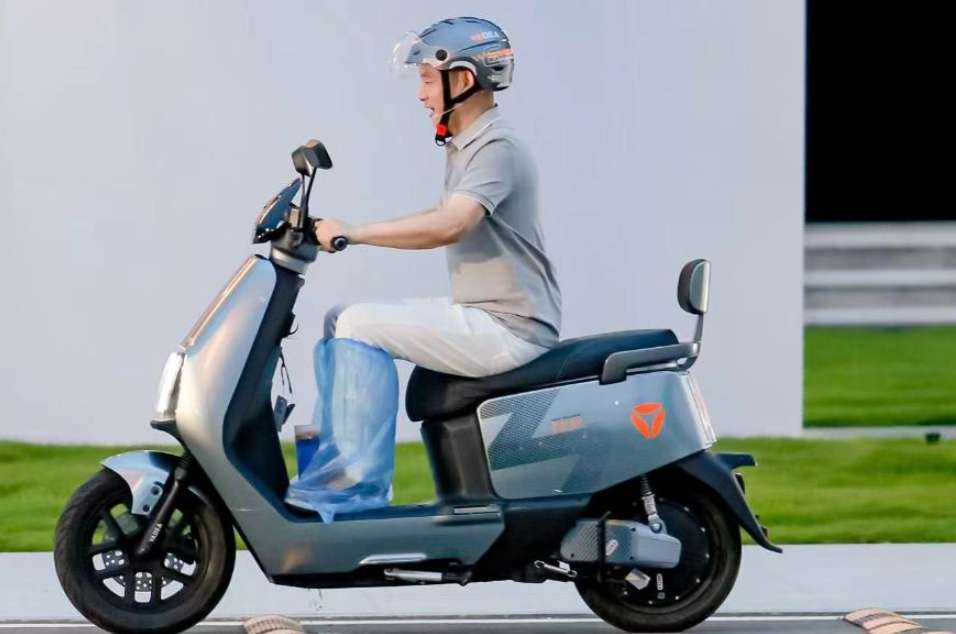In a landscape once dominated by the electric bicycle giant Yadi, the clouds are beginning to gather. As of December 27, Yadi Holdings, publicly traded in Hong Kong, has released a sobering profit forecast for the fiscal year ending December 31, 2024. The company anticipates a net profit between 1.2 billion to 1.4 billion yuan, down from a striking 2.64 billion yuan in the previous year—indicating a substantial drop of nearly 47% at the upper estimate. This marks the first downturn for Yadi in five years, signaling a critical juncture for the industry leader.
The trodden path of electric bicycles, once thriving following the implementation of new national standards in 2019, now seems to have led Yadi into a valley of declining fortunes. Following a tsunami of demand triggered by the new regulations—which required the phasing out of substandard vehicles—2020 saw production soar to 51 million units, with that year’s sales continuing to thrive through 2022. However, the party seems to be over; market forecasts for 2024 predict a decrease of 9.1% in sales of two-wheeled electric vehicles in China. The decreasing consumer appetite for e-bikes has undoubtedly cast a shadow over Yadi's prospects.
Despite the broader industry malaise, it’s worth noting that many competitors have managed to weather the storm more effectively. For example, Ninebot, which targets the high-end market, reported a remarkable net profit increase of 155.94% in the first three quarters of 2024, achieving 969.7 million yuan. Similarly, Aima, the second-largest player in the market, reported a marginal profit decline of just 0.25% during the same period.
To understand how Yadi has arrived at this juncture, it’s crucial to reflect upon the journey that shaped its ascent. The 2018 announcement of the electric bicycle safety technology specification—a set of mandatory standards effectively implemented in 2019—had significant implications for the industry. Products were required to meet new specifications regarding structure and safety, prompting a wave of compliance-driven purchases. Yadi, leveraging its extensive network and favorable pricing in the mid-range market, captured a dominant share of the growing demand.
During the height of this boom in 2023, Yadi boasted impressive sales numbers, exceeding 16.5 million electric two-wheelers sold—and commanding roughly one out of every three sales in the market. Their success stemmed primarily from two strategies: the rapid expansion of their retail locations, with more than 40,000 points of sale, and their focus on affordable products priced below 4,000 yuan. This strategy had allowed Yadi to thrive where competitors floundered, ensuring significant bottom-line growth amidst a broader economic recovery.

However, as the lucrative margins of the past begin to evaporate, Yadi’s previous advantages appear more like constraints. With declining sales figures—from 8.21 million units sold in the first half of 2023 to 6.38 million in the same period of 2024—a stark realization dawns: the “volume over profit” strategy no longer holds water in a contracting market. Consequently, as early reports indicate, Yadi has witnessed a 15.4% drop in revenue alongside a near 13% cut in net profit.
The perilous decline of Yadi heralds a broader shift in the industry landscape. While it retains considerable market share, new competitors are aggressively encroaching upon Yadi’s turf. The market capitalization of Yadi stands at about 40.3 billion Hong Kong dollars—approximately 37.9 billion yuan—but they are beginning to look over their shoulders. Just across the strait, Aima Technology and Ninebot have managed to maintain market valuations of 35.3 billion and 34.1 billion yuan, respectively, emphasizing Yadi’s waning dominance.
Faced with stiff competition and declining profitability, Yadi must navigate a new strategy if it hopes to reverse its fortunes. The common wisdom in the industry is twofold: elevate toward the premium market or seek opportunities abroad. Both pathways hinge on exploiting innovation and differentiation, as well as adapting to evolving consumer demands.
Breaking through to a premium segment represents a primary avenue for Yadi’s revival. Though the company dabbled in this direction as early as 2021 with its VFLY sub-brand, aiming to highlight advancements in lithium battery technology and intelligent display capabilities, the lack of market traction resulted in an uphill battle. Success requires not only sound investments in R&D but also a remarkable degree of differentiation in a crowded marketplace.
For instance, Ninebot has thrived on its creations that offer enhanced technological integrations, including smart monitoring and an interactive user experience through a bespoke app that tracks riding progress. This user-focused approach establishes a competitive barrier that Yadi has yet to achieve, particularly in terms of consumer connection and engagement.
Looking outward toward opportunities outside China's expansive borders, Yadi has articulated ambitious global aspirations. The founder, Dong Jinggui, had previously projected capturing 35% of the international market in a grand “global multiplication strategy.” Yet the firm’s revenue and profit depend heavily on the domestic market, as indicated in its mid-2022 report that stated over 90% of revenue stemmed from sales in China. Therefore, without a robust international strategy, Yadi risks being caught flat-footed as rivals establish footholds in lucrative markets abroad.
Competitors are already making waves: Aima is setting up flagship stores across Europe and North America; New Standard has spread its reach to nearly 100 countries via agency agreements; and Niu is present in 48 international locales. This competitive expansion positions Yadi at a substantial disadvantage, accentuating the urgency to recalibrate its strategies.
In summary, Yadi’s illustrious rise appears to be losing momentum, with rising tribulations as industry dynamics shift. Although this year has revealed significant profit contractions, it may mark just the beginning of more arduous challenges ahead for the company. As the electric bicycle industry wrestles with evolving trends and consumer demands, Yadi must urgently adapt or face more significant market threats in the months and years to come.